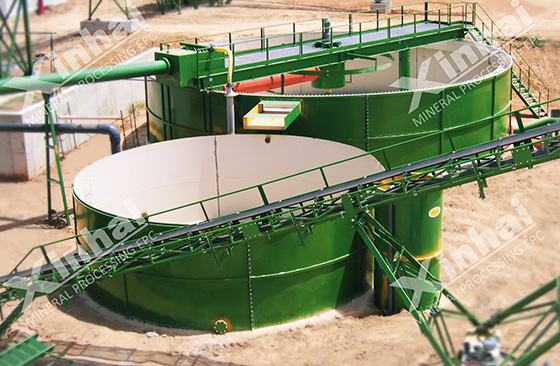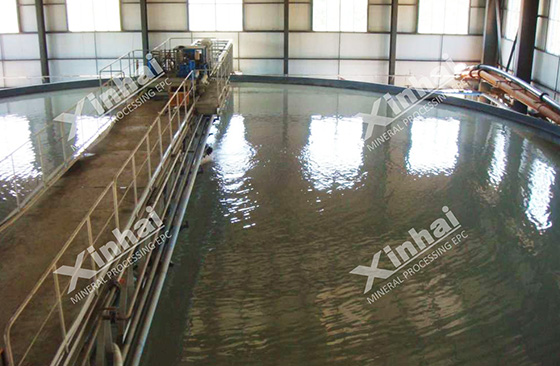
High efficient thickener is a widely used thickener, which is improved according to traditional thickeners. After upgrading, this thickener is equipped with an NC reagent feeder. Generally, the purpose of dosing is to improve water quality and accelerate flocculation efficiency, such as a flocculating agent. Here we introduce the research on flocculating agents during the operation of highly efficient thickener.

Someone did research on a kind of new type starch flocculant with highly efficient flocculating performance and dewatering performance, which is called STC-g-PDMC. STC-g-PDMC is a kind of high efficient flocculating agent used in effluent treatment and sludge dewatering, which is obtained from starch grafts of methacryloyloxyethyl trimethyl ammonium chloride (DMC). This flocculating agent takes potassium persulfate as an initiator in the synthesis process, acetone and ethanol are used for the deposition and purification of copolymer in the synthesis process, then weaken the toxicity. Besides, they analyzed copolymer through infrared spectroscopy (IR), magnetic resonance imaging, X-ray diffraction, thermogravimetric analysis, and elemental analysis.
Contrasting starch with polyacrylamide, they found that the flocculation performance of the new type of flocculating agent is better than the above two kinds of traditional flocculating agents. Therefore, STC-g-PDMC is a new kind of flocculating agent with good application prospects and environmental protection effects.

What's more, somebody took tapioca starch-grafting-polymethacrylate (PMAM) copolymer as the flocculating agent to study. Tapioca starch-grafting-polymethacrylate (PMAM) copolymer is synthesized by the polymerization reaction, which is used to test its flocculation performance. As a result, the highest grafting rate and monomer conversion rates were 79.9% and 78% respectively. They also made copolymer characterization by infrared spectroscopic analysis, X-ray diffraction analysis, scanning electron microscope, differential scanning analysis, and thermogravimetric analysis. The average weight range of the PMAM single polymer chain on this copolymer was 15.9~30.8×105g/mol. Compared with native starch, the grafting starch had higher viscosity and stability. Flocculation performance studies showed that this copolymer is superior to cassava starch and PMAM in flocculation performance. As the textile sizing agent, the cotton yarn that adopts this copolymer has a much stronger tensile property (104MPa), while natural starch only has 34MPa.
Adding a flocculating agent is a very important part of the operation of high efficient thickener, which can improve economic value greatly if used properly.
To find out more about our products and solutions, please fill out the form below and one of our experts will get back to you shortly.